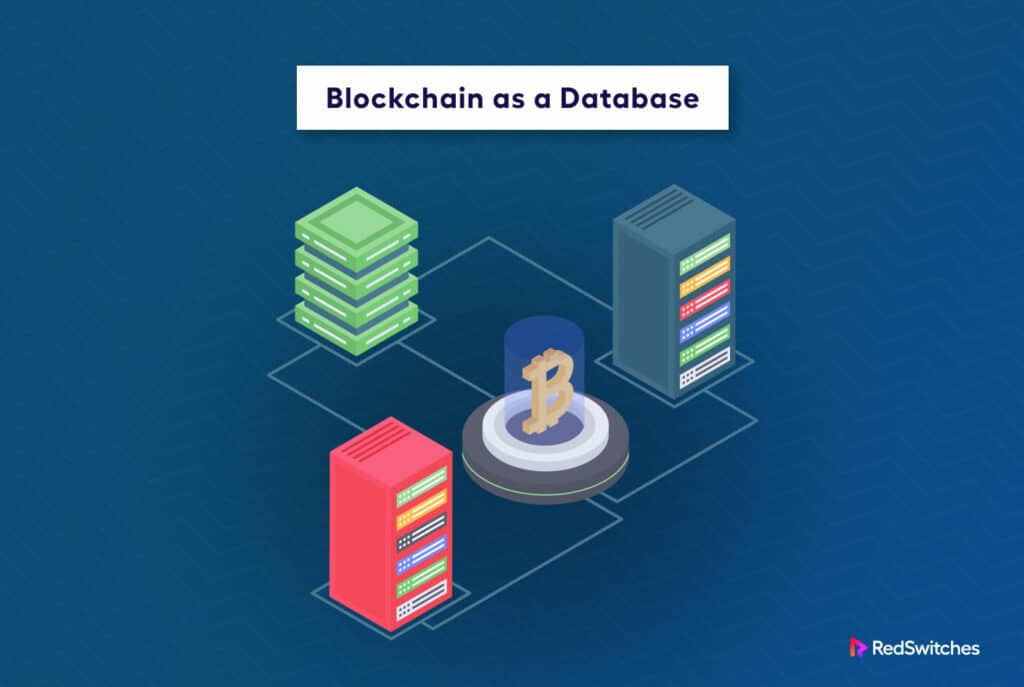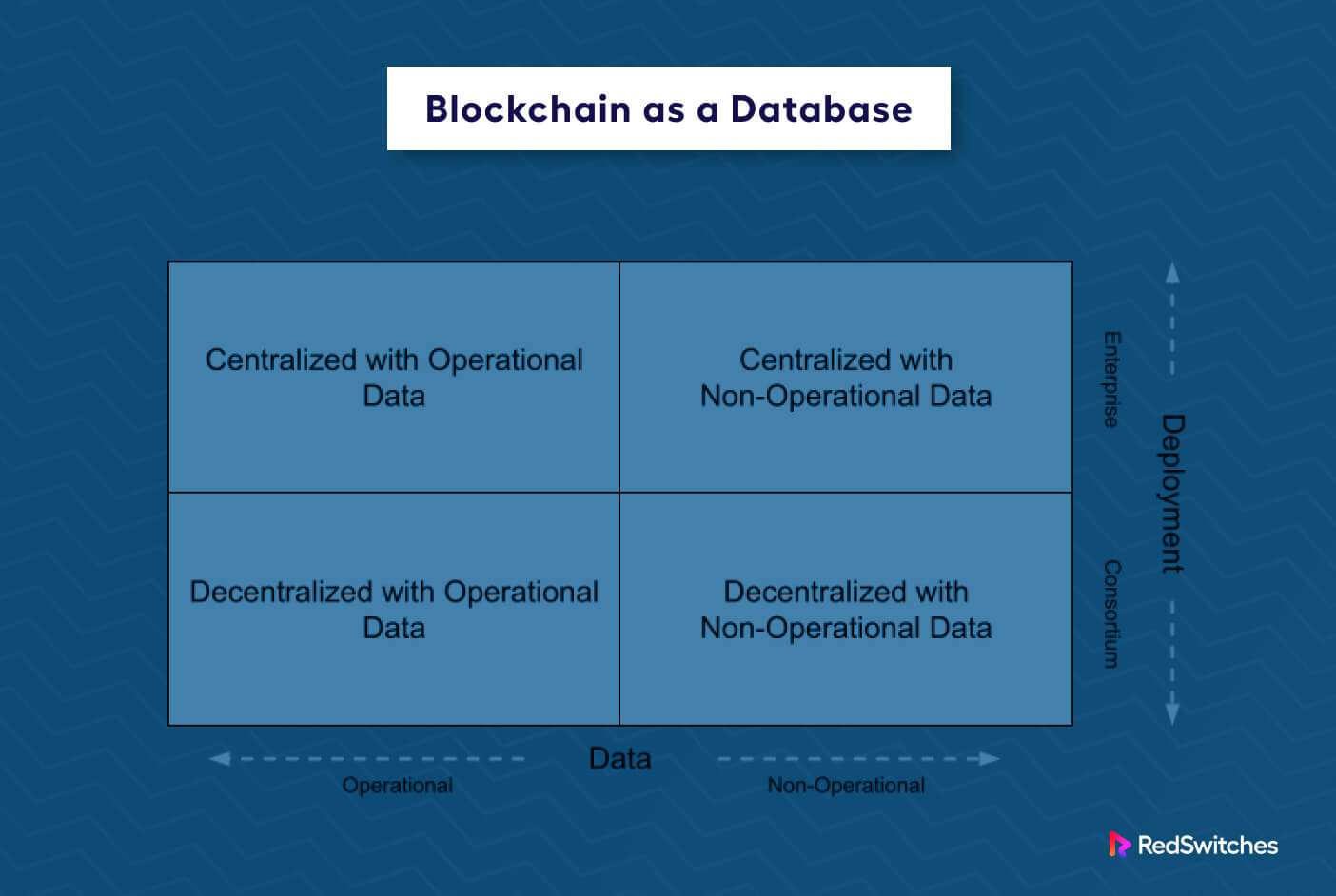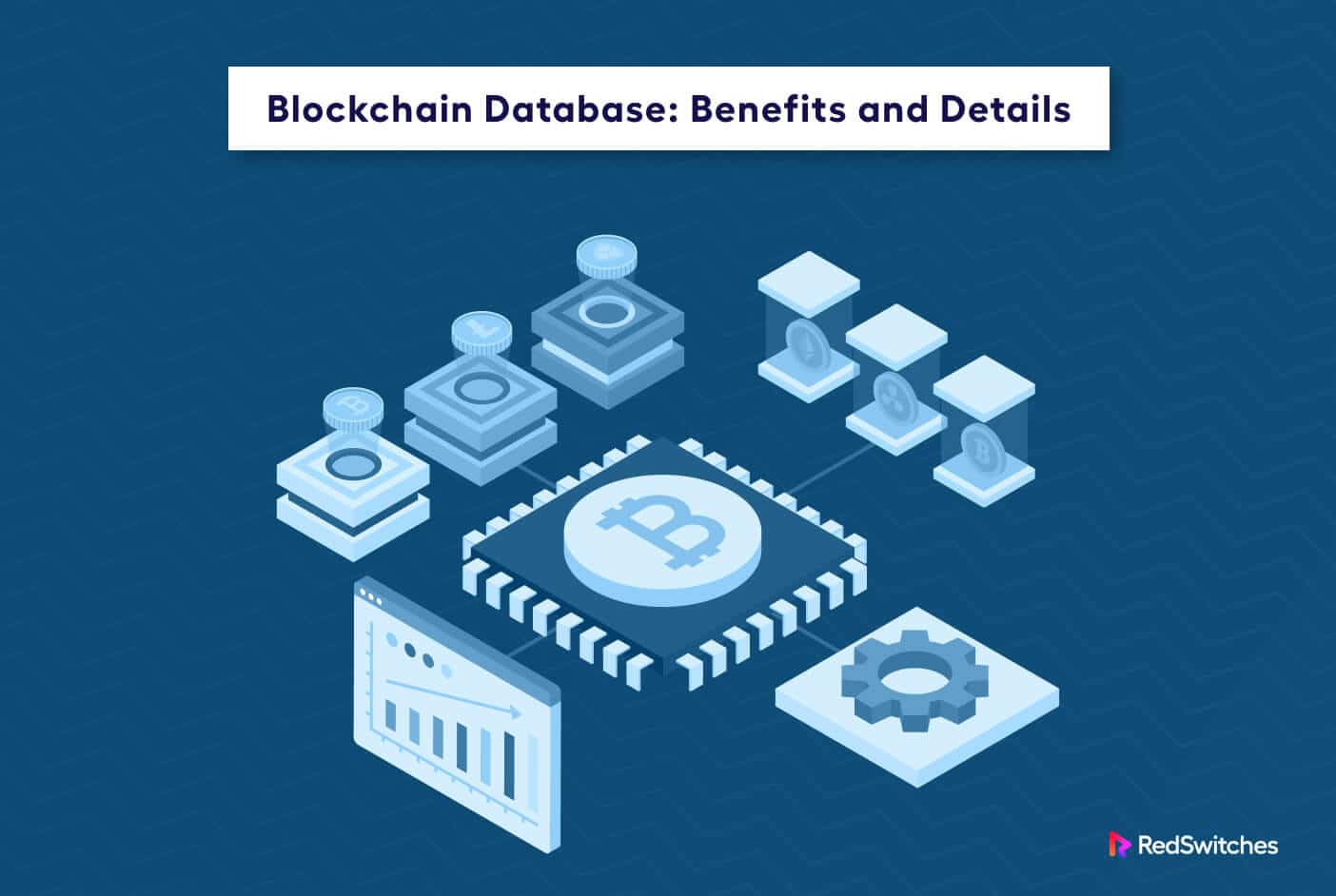Data privacy and identity thefts have become severe challenges that affect everyone, from corporate entities to Average Joe.
While users rely on strong authentication to protect their logins and details, protection for data stored in databases is still a weak link in the security chain.
The security of medical data and patient information is an excellent example of this scenario. There have been very few instances where hackers lifted information from the patient’s end. Almost every leak of such data has resulted from a compromised corporate data store.
Another related aspect of this scenario is the secure transfer of information among providers. In the traditional healthcare model, each provider and vendor keeps records in in-house databases. Poorly-coded information exchange and weak security protocols are often the reasons behind security breaches.
Most of these security problems can be minimized or eliminated using blockchain as database.
In this article, we’ll discuss popular implementation configurations, two popular platforms you can use to implement this idea, and the three crucial real-world examples of using blockchain as a database.
Table Of Contents
- Blockchain as Database vs Traditional DBMS
- Why Should You Consider Using Blockchain as a Database?
- Blockchain as a Database: Implementation Configurations
- Advantages and Challenges of Blockchain as a Database
- Real-world Examples of Blockchain as a Database
- The Future of Blockchain as Database
- Conclusion
- FAQs
Blockchain as Database vs Traditional DBMS
Before we mention the implementation scenarios you can leverage for blockchain as a database for your projects, you should realize that blockchain building and management platforms are not optimized to function as traditional DBMS by default.
Traditional DBMS prioritizes structured data storage, fast reading and writing to the database, and SQL for data and structure manipulation. Blockchain platforms, however, focus on data integrity, decentralization, and security.
You should also consider the nature of the data you would store in the database.
Blockchain databases are best suited for data with simple structure. This includes discrete elements that can stand alone and don’t need to maintain relationships with other data elements. This is critical for maintaining the immutability of the data on the blockchain.
In contrast, traditional DBMSs are built to cater to complex data structures and one-to-many or many-to-many relationships. For instance, you can store data objects in OODBMS and use the OOP principles to manipulate data. Similarly, traditional relational databases can store items and retrieve data based on these relationships.
Why Should You Consider Using Blockchain as a Database?
To better understand how you can use blockchain as database for your projects, you need to realize that blockchain technology is a distributed (it can be hosted on multiple servers) and decentralized (there is no central ownership of the data or platform) ledger system built to record data securely and transparently.
As such, it offers several key features that make it a suitable candidate for a database in projects with high-security requirements:
Immutability: This is the most-quoted reason for using blockchain as database. Once a process or user records a data item on the blockchain, altering or deleting it becomes impossible because of the decentralized nature of the blockchain. As a result, all stakeholders have high confidence in the data’s integrity and permanence.
Decentralization: In practice, any blockchain runs on a node-based network. In this setup, you can store the entire data on every node. This makes every node a working database for the application. This structure makes the application fault-tolerant and enhances process resiliency.
Security: Generally, blockchain as a database is much more secure than traditional DBMS. This is a direct outcome of using cryptographic techniques to secure the blockchain and its data.
Transparency: If you wish, you can allow all users and processes to view all transactions (and data) stored on the blockchain. This will enable developers and managers to make data visible and available to users who need it for their requirements.
It is important to note that blockchain is unsuitable for all projects despite these advantages. There are scenarios (online stores and system logs) where you might be better off using traditional databases.
The choice of using blockchain as a database for your projects depends on factors such as the nature of the data, how processes and users need to use data, and the overall performance expectations.
Blockchain as a Database: Implementation Configurations
Now that you know why blockchain can be a good choice for your projects, let’s discuss the practical aspects of using blockchain as database. We’ll start with the two most important considerations that you should consider before you finalize your choice for the database component.
The first consideration is whether the database will be deployed within an enterprise or consortium setting. It’s important to note that blockchains can be centralized when used internally within an enterprise, with the enterprise acting as the central authority. However, in most cases, blockchains operate in a consortium model to ensure decentralized ownership of data. In this scenario, all validation nodes possess a copy of the data.
The second consideration is the intended usage of the data. Operational data is directly accessed by clients connecting to the database. In such cases, anyone can query and perform actions on the database. On the other hand, non-operational data is typically accessed through an intermediary or another layer that provides additional security functionalities and data manipulation services.
Let’s consider these four cases in some detail because this decision would affect the performance and operational efficiency of the project.
Centralized With Operational Data
If the blockchain database is deployed within an enterprise, centralization simplifies the deployment process and offers multiple advantages compared to other database options. While this implementation could appear to go against the decentralized nature of blockchain, it still provides benefits such as the ability to create and transfer assets and data items.
Centralized With Non-operational Data
Similar to the previous scenario, the database deployment remains centralized with a few administrators. However, the critical difference is that clients and processes do not directly access the data. Instead, they connect to database instances that can interact with and offload specific data to the blockchain.
Decentralized With Operational Data
In this scenario, a consortium of internal and external stakeholders essentially removes the need for a single entity to control the database infrastructure. This decentralized implementation is ideal for data immutability as each stakeholder can own a node in the blockchain.
However, you should realize that in this implementation, the issue of data privacy becomes crucial, and the project designers should carefully plan data access and related permissions to ensure confidentiality. An excellent example of these permission considerations is the right to read and modify, which designers should consider granting on an as-needed basis.
Decentralized With Non-Operational Data
This deployment scenario resembles the centralized counterpart but involves multiple administrators that control access to the blockchain database.
Advantages and Challenges of Blockchain as a Database
Like all technology-related decisions, using blockchain as database for your projects has several benefits and challenges. We’ll go through these briefly so that you can make informed decisions based on your project’s requirements.
Advantages of Blockchain as a Database
Trustworthiness
By leveraging consensus mechanisms, blockchain ensures that all participants agree on the validity of transactions and data stored in the database. This consensus-building process enhances trust among participants as they collectively validate and verify the accuracy of the data.
Data Integrity
Blockchain’s append-only structure guarantees the preservation of historical data. All transactions and changes are recorded sequentially, creating an auditable and tamper-resistant data trail. This feature is helpful for applications requiring accurate record-keeping or compliance with regulatory requirements.
Efficiency
Blockchain databases can streamline processes and reduce redundancy by providing all stakeholders with a shared, real-time data view. This reduces the performance overheads caused by data duplication. This results in improved efficiency and cost savings at the project’s level.
Challenges
While blockchain-based databases offer many advantages, you should know they aren’t the best fit for all projects. Here are some factors you should consider before you finalize your decision.
Blockchain Differs From Distributed Computing Systems
In contrast to traditional distributed computing systems, blockchain relies on the active participation and quality of nodes for operation. As a result, blockchain networks may lack cohesion, cooperation, and synchronization among nodes, setting them apart from traditional distributed computing systems.
Considerable Implementation Costs
Implementing blockchain technology involves significant upfront expenses. Despite the availability of open-source solutions like Hyperledger, setting up blockchain-driven databases still requires substantial investments. These costs include hiring skilled developers with operational blockchain expertise, acquiring a suitable blockchain solution, and ongoing maintenance expenses.
Real-world Examples of Blockchain as a Database
Blockchain as a database is used in various sectors, including healthcare and retail. We will discuss three real-world examples of these use cases to highlight the benefits of using blockchain-powered databases.
Asset Management
Asset management involves the handling and exchanging of various assets like fixed income, real estate, equity, mutual funds, commodities, and alternative investments.
Using traditional databases in asset trading processes can be costly, particularly when multiple countries and cross-border payments are involved. Blockchain provides a valuable solution by eliminating the need for intermediaries such as brokers, custodians, and settlement managers. Instead, it offers a transparent and simplified process on a blockchain ledger, minimizing the likelihood of errors.
Healthcare
Blockchain technology holds immense potential for revolutionizing the healthcare industry.
Smart contracts allow for direct agreements between two parties, bypassing the need for intermediaries. With all parties accessing the contract details, the smart contract is executed automatically when the specified conditions are met.
In the healthcare sector, this becomes especially beneficial for encoding personal health records on the blockchain, ensuring that only authorized primary healthcare providers can access them using a key. Furthermore, it aids in upholding the confidentiality of patient information, in line with the HIPAA Privacy Rule, by preventing unrestricted access to sensitive data.
The Future of Blockchain as Database
The prospects of blockchain as database are highly promising and continuously evolving.
Beyond its initial association with cryptocurrencies, blockchain technology offers numerous advantages as a robust database solution. The immutability and cryptographic security inherent in blockchain make it exceptionally secure and well-suited for applications demanding data integrity. Furthermore, its decentralized nature eliminates the need for a central authority, fostering enhanced stakeholders’ trust while bolstering transparency and accountability.
Thanks to features such as smart contracts, blockchain as a database can potentially revolutionize various sectors, including finance, real estate, insurance, and legal industries. Nevertheless, scalability has posed challenges for public blockchain solutions. Ongoing efforts are underway to develop scaling solutions like layer-two protocols and sharding to enhance transaction throughput and overall performance.
In the future, we can anticipate advancements in blockchain interoperability protocols, facilitating seamless communication between different blockchain networks. Interoperability will enable the smooth transfer of data and assets across multiple blockchains, stimulating collaboration and expanding the range of use cases for blockchain databases.
So, while blockchain may not be a universally applicable solution for all database needs, a hybrid approach integrating traditional databases with blockchain technology could prove more practical in certain scenarios.
Conclusion
Blockchain as the database has revolutionized database management, offering groundbreaking solutions with its immutability, security, and decentralization. We explored the idea of blockchain as a database that enables the development of blockchain-based data storage components.
While blockchain faces challenges like scalability and interoperability, ongoing efforts to address these issues through scaling solutions and interoperability protocols promise to drive the technology forward. As a result, as businesses seek secure and transparent database solutions, blockchain will play an increasingly crucial role in revolutionizing data management practices.
At RedSwitches, we recognize the significance of reliable and secure infrastructure for emerging technologies like blockchain. With our cutting-edge hosting solutions and expertise, we provide the necessary foundation for businesses to harness the full potential of blockchain as a database. Place your trust in our company to power your blockchain initiatives and unlock the transformative capabilities of this revolutionary technology.
FAQs
Q1. What is the difference between a blockchain and a database?
A blockchain can be categorized as a specific kind of database, although not all databases are blockchains. Blockchains are digital ledgers for storing transactional data, limiting operations to reading and creating entries. On the other hand, traditional databases can store diverse data types and facilitate update and deletion transactions. Each block within a blockchain necessitates signing and verification processes, resulting in slower performance than other databases
Q2. Is blockchain a relational database?
No blockchains are not relational databases.
Q3. Does blockchain have a database?
Blockchain implementations must utilize a database in the background. MongoDB is an excellent option for storing blockchain data due to its adaptable data schema and comprehensive query language.



